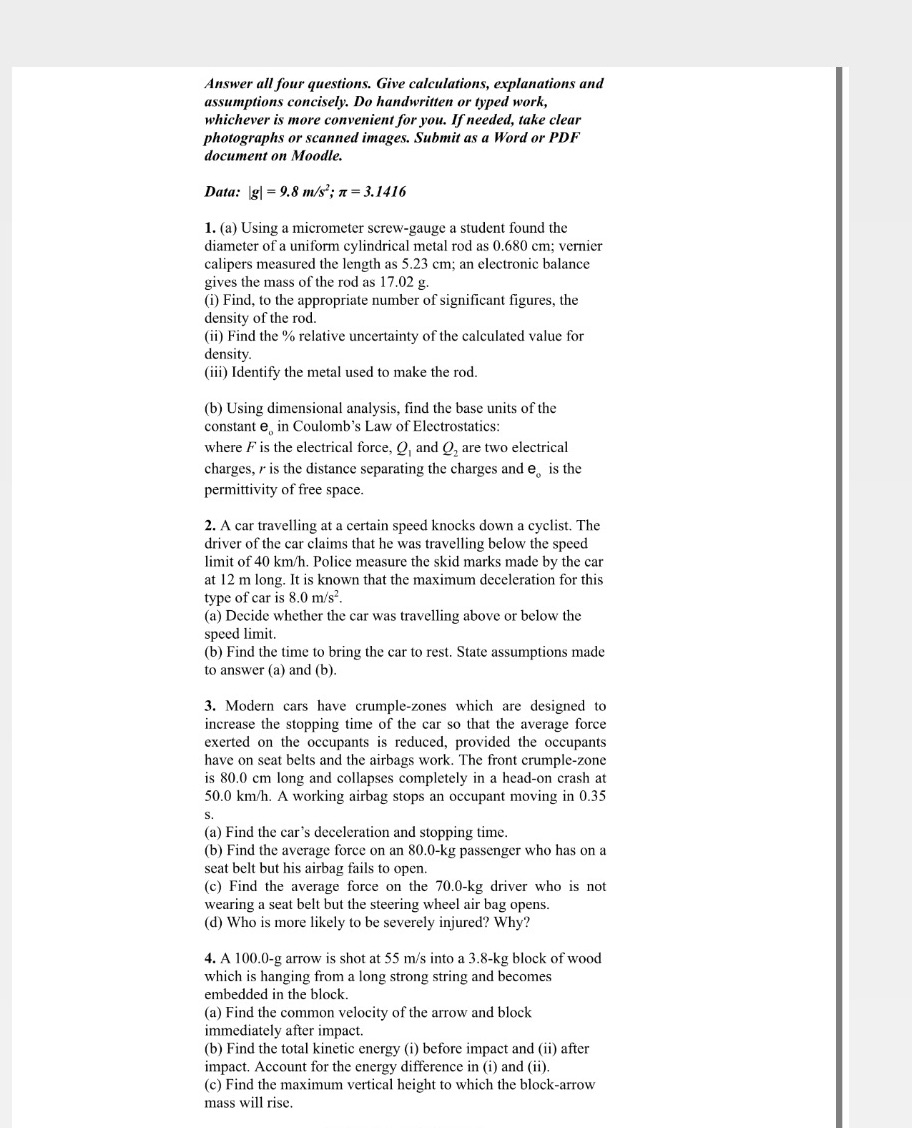Answer all four questions. Give calculations, explanations and assumptions concisely. Do handwritten or typed work, whichever is more convenient for you. If needed, take clear photographs or scanned images. Submit as a Word or PDF document on Moodle. Data: (gl = 9.8 m/s'; n = 3.1416 1. (a) Using a micrometer screw-gauge a student found the diameter of a uniform cylindrical metal rod as 0.680 cm; vernier calipers measured the length as 5.23 cm; an electronic balance gives the mass of the rod as 17.02 g. (i) Find, to the appropriate number of significant figures, the density of the rod. (ii) Find the % relative uncertainty of the calculated value for density (iii) Identify the metal used to make the rod. (b) Using dimensional analysis, find the base units of the constant e, in Coulomb's Law of Electrostatics: where F is the electrical force, O, and O, are two electrical charges, / is the distance separating the charges and e, is the permittivity of free space. 2. A car travelling at a certain speed knocks down a cyclist. The driver of the car claims that he was travelling below the speed limit of 40 km/h. Police measure the skid marks made by the car at 12 m long. It is known that the maximum deceleration for this type of car is 8.0 m/s'. (a) Decide whether the car was travelling above or below the speed limit. (b) Find the time to bring the car to rest. State assumptions made to answer (a) and (b). 3. Modern cars have crumple-zones which are designed to increase the stopping time of the car so that the average force exerted on the occupants is reduced, provided the occupants have on seat belts and the airbags work. The front crumple-zone is 80.0 cm long and collapses completely in a head-on crash at 50.0 km/h. A working airbag stops an occupant moving in 0.35 S. (a) Find the car's deceleration and stopping time. (b) Find the average force on an 80.0-kg passenger who has on a seat belt but his airbag fails to open. c) Find the average force on the 70.0-kg driver who is not wearing a seat belt but the steering wheel air bag opens. (d) Who is more likely to be severely injured? Why? 4. A 100.0-g arrow is shot at 55 m/s into a 3.8-kg block of wood which is hanging from a long strong string and becomes embedded in the block. (a) Find the common velocity of the arrow and block immediately after impact. (b) Find the total kinetic energy (i) before impact and (ii) after impact. Account for the energy difference in (i) and (ii). (c) Find the maximum vertical height to which the block-arrow mass will rise







